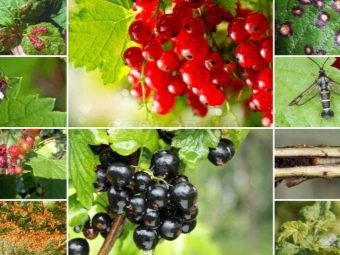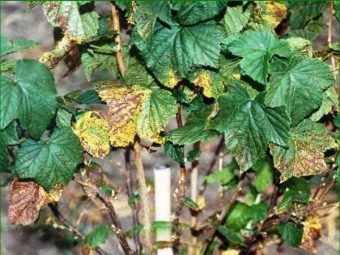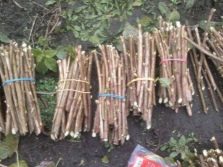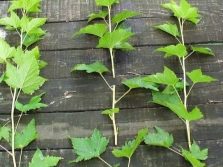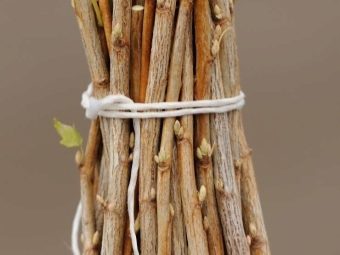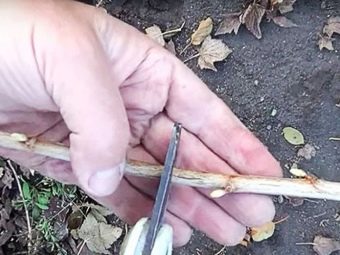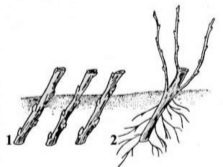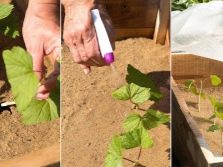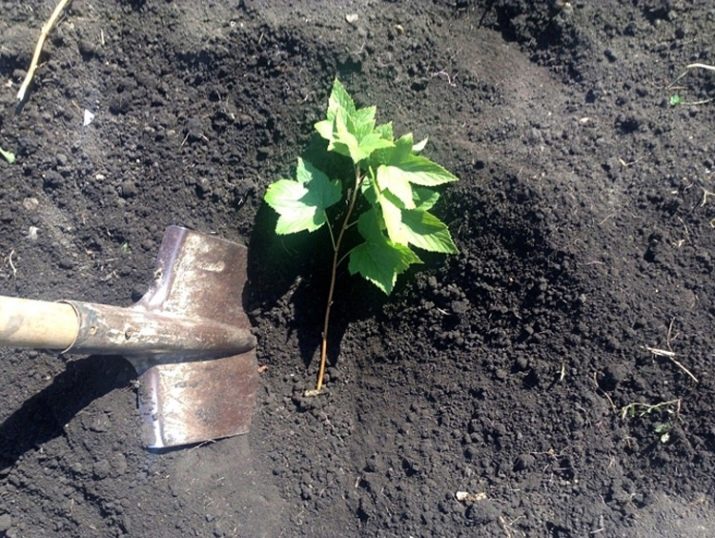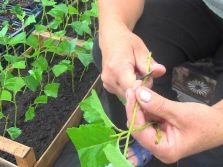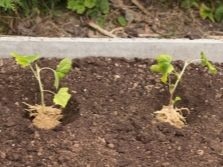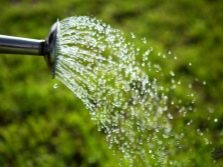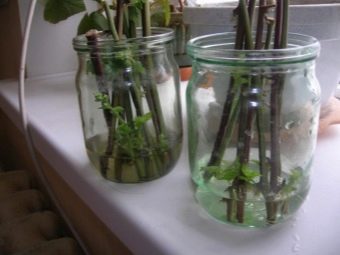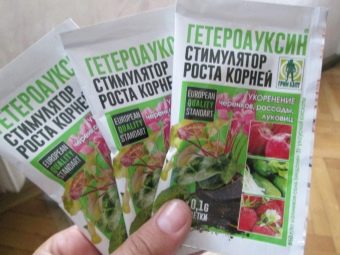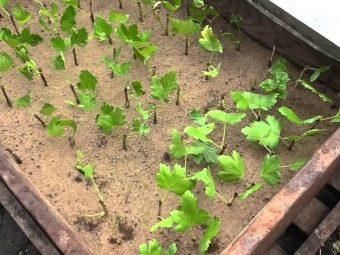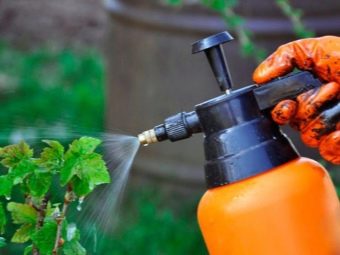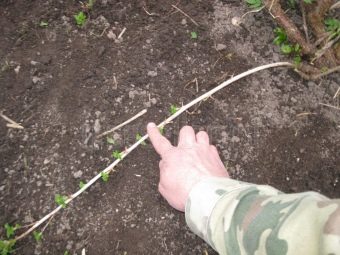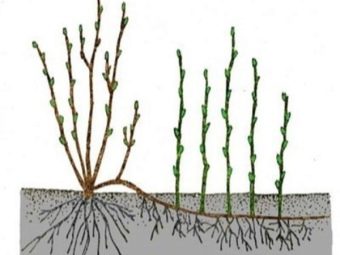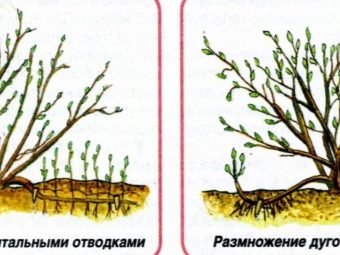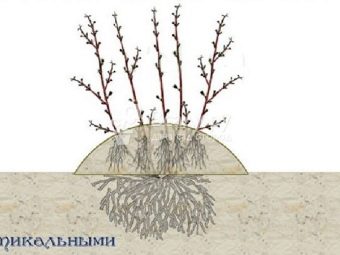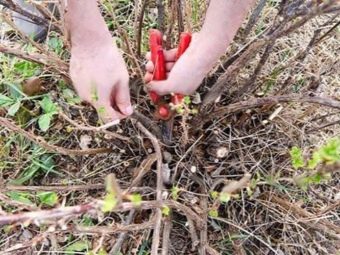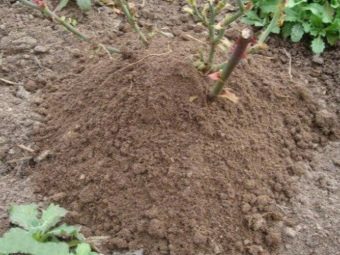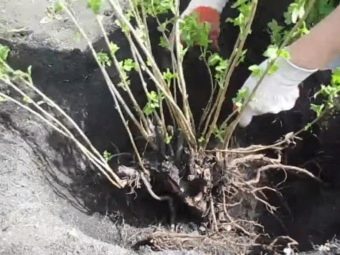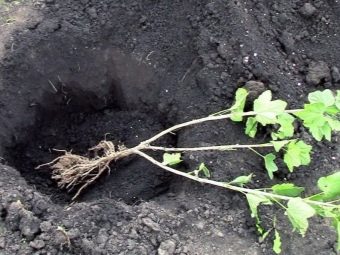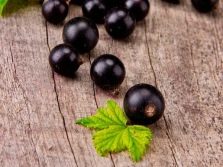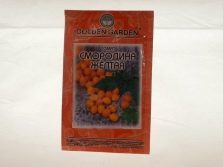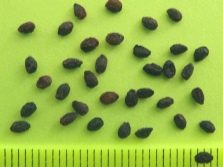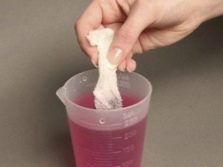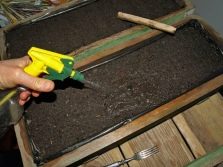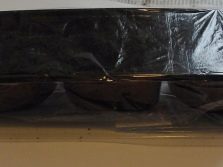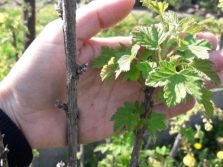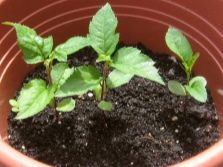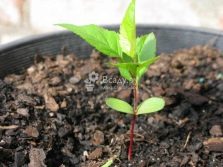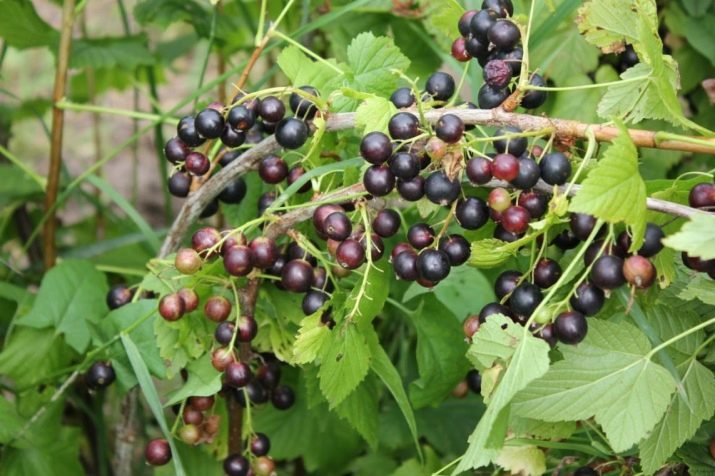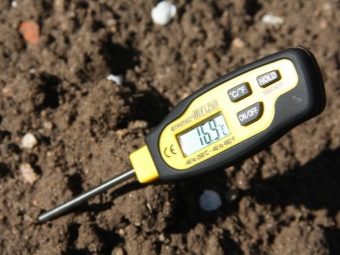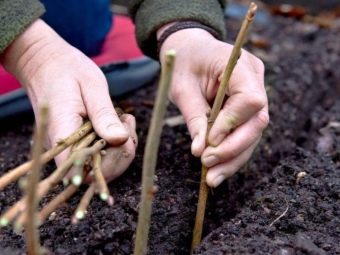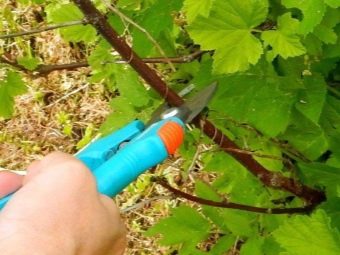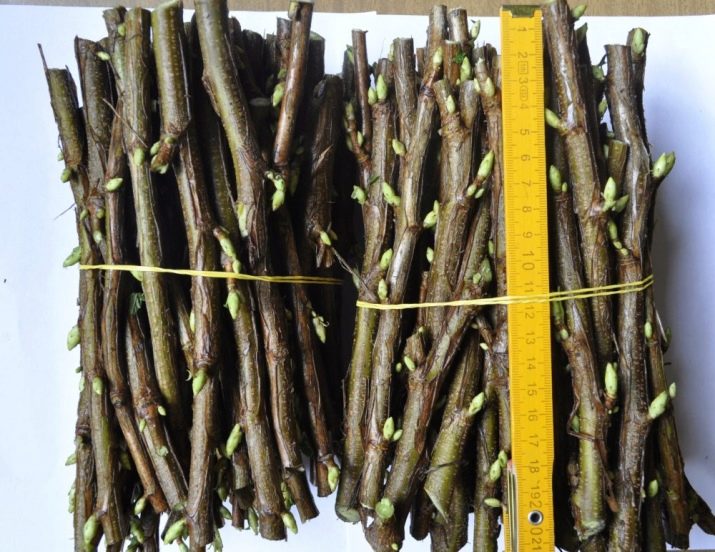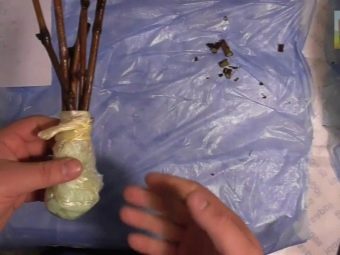Description of currant breeding methods
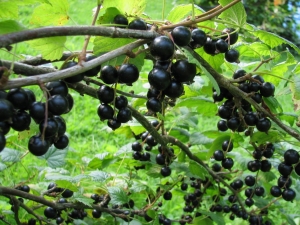
The problem of reproduction of currant tree is very serious. Recently, more and more diseases are being formed that can destroy the culture. In addition, all sorts of malicious insects are also activated and tend to harm any bush with berries. To prevent the culture from being destroyed, gardeners are increasingly breeding it. This allows you to strengthen the seedlings and grow a healthy tree.
Ways
Grow and multiply currants can be different methods. The breeding process is not very time consuming, but it should be carried out carefully and carefully. Very often, gardeners make mistakes in the early stages of breeding. To avoid this, there is a detailed instruction for each method of reproduction of black currant.
Cuttings
Cutting offers several breeding methods each of which is very effective:
- reproduction with woody cuttings;
- reproduction using green cuttings;
- reproduction by apical cuttings.
To multiply currants using lignified cuttings, effectively and efficiently. This method allows you to get a lot of large and juicy berries from one young branch. Shavings are harvested in the spring and autumn seasons. Reproduction takes place in the spring in conjunction with trimming bushes. Cuttings can only be done with a young and healthy shoot. For cutting suitable branches, the diameter of which is equal to nine millimeters, and the length of twenty-five or thirty centimeters.
The branches should be saturated with healthy and intact kidneys. Cut branches need very carefully. To cut, you need a sharply sharpened knife or pruner. Incisions are made above the kidneys, with a distance of one centimeter. You also need to completely cut off the non-woody tops. It is required to make an incision along an oblique direction, cutting off all parts that are under the lower buds. The essence of breeding currant culture cuttings is the formation of roots. They appear in place among cuttings and buds.
In the autumn, it is necessary to prepare a special pit where the currant will be planted. Fertile soil, rotted manure and compost are poured into this pit. You can start planting cuttings in early spring. This is done according to a specific scheme.
- First of all, the cuttings are planted to a depth of twenty centimeters. At the same time, two or three kidneys remain above the ground.
- Between seedlings, it is important to leave a distance of not less than fifteen centimeters.
- Before you begin the process of planting, the soil requires a good digging and bursting. In addition, it must be moistened. Moist soil activates the development of the root system of the tree.
- Next comes the mulching of the soil. For this process, sooty humus or peatland is used. For mulching, the substances mentioned are poured into the earth five centimeters thick. Such dressing not only feeds the plant, but also keeps moisture in the ground.
- To retain moisture and save young cuttings from the invasion of insects, they can be covered with a dark film. For better tracking of the process of reproduction of a plant and its growth a hole is cut in the film above the seeds.
Similarly, bred black variety of currants. As for the red species, it is recommended to plant it in early October. Reproduction of the plant at a later date will lead to the loss of half the crop.
If seedlings are sown at the end of the summer season, this will only improve the yield. When planting during this period, gardeners will receive fully formed bushes with berries.
Another type of graft reproduction is apical grafting. Apical cuttings are the top of fresh and annual shoots. Such breeding berries is quite difficult and expensive. For reproduction to be successful, it will be necessary to prepare the soil and special equipment before planting. The work of technology is to create moisture in the territory of the future sowing.Humidity should be present both in the air and in the soil. The soil moisture index is eighty percent, and ninety percent for air.
In order to moisten the soil it is better to use a mixture of peat and clean river sand. These elements for the mixture are taken in the same proportions. Before you put the mixture in the pit first laid fertilizer. Peat humus or sod-humus soil can act as a top dressing. As soon as the fertilizer was lined with a thick layer of four centimeters, the prepared mixture is poured out.
The entire breeding process takes place in several stages.
- The first thing is harvested material. Currant petioles are prepared during the period of one-year-old shoots of the necessary flexibility. This process lasts from the beginning of June to the second half of the month.
- Then, the cutting of the selected branches. It is better to cut branches at an early time. In the cut branches, it is important to maintain the moisture of the flesh before planting. It is recommended to cut branches twelve centimeters long.
- Plant cuttings better in the greenhouse or greenhouse. There the optimum temperature is set for new seedlings. It is important to constantly provide moisture in the air and the ground. Under the right conditions, a sprout of roots will be noticeable after a few weeks.
- The final stage of reproduction is care. As for irrigation, the plant requires a lot of water, so it will have to be watered often. It is watered as the soil in which the cuttings were buried, and the shrub itself. When the roots begin to germinate, the frequency of watering should be reduced. At this stage of the growing season, watering should be carried out with a large volume of water. At this point, it is also important to air the seedlings. Active growing season begins a month after the seedlings were planted. During the period of growth, you must not forget to feed the plants.
For fertilizing use liquid fertilizer. Fertilizing the plant is required once every three weeks.
The last method of breeding by grafting is to plant non-woody green branches. The breeding process is divided into several stages.
- Preparation of planting material, as in other methods, is the first step. It is recommended to look for suitable cuttings on a rainy and windy day. A strong wind will show the most flexible twigs. It is better to pick the branches of medium size. Fifteen centimeters will be enough. In addition, there should be at least four sheets on a branch.
- Before you start planting, branches need to insist in a special solution "Heterouxin". This butyric acid is considered the best growth promoter. Planting materials are infused during the day.
- Sprigs are allowed to plant only in greenhouse or greenhouse conditions. Dug out pits filled with peat, sifted sand and ripened compost are planted with cuttings four centimeters deep. Cuttings must be covered with a plastic or glass bottle.
- Spraying of the cuttings is required as often as possible. In addition to watering daily shoots should be moistened.
- The young plant does not like the sun, so at the beginning of the growing season it is hidden from the sun.
- Twigs root in a few weeks. When this happens, the amount of watering is reduced. Instead, the active feeding of the shrub with nitrogen-containing additives begins. A month later, the seedlings become stronger and are already beginning to require more light. Therefore, it is necessary to remove the plastic or glass container used.
Layering
The method of propagation by layering is used to breed many plant varieties. This method has an important advantage due to which it has such popularity. When planting a crop, by cutting method, the probability that the seedlings will take root is equal to one hundred percent.The essence of the method is reduced to the spring addition of several layers prepared since summer. These layers are taken from the main tree.
In order for the plant to get better, it must be properly planted. First of all, pits are dug up to a depth of fifteen centimeters, into which shoots will later be planted. The pits are dug out according to the pattern of rays that depart from the main shrub. These pits are gently sprinkled with soil and ripened humus, peat and compost. All of these powders are mixed in equal proportions.
Cuttings need to pin the wire. To do this, the wire is bent in the shape of the letter “V” and sprinkled with earth. As soon as the young shoots begin to take root and germinate, the wooden segments are removed. By mid-October, the young layers will begin to take root. As soon as this happens, they are separated from the main tree. Reproduction of blackcurrant culture in this way is carried out throughout the year. By the spring of next year, it is allowed to replant cuttings to a permanent growth site. As for the white and red varieties, their ripening period takes three years.
Before planting cuttings, it is necessary to conduct a thorough loosening of the soil around the pit for planting. In addition, it is necessary to add nutrients to the hole, and then water it. Currant drainage is carried out in three ways:
- horizontal;
- vertical;
- arcuate.
The horizontal method is very popular. All procedures are carried out before the appearance of the first leaf. The most productive bush is chosen. Before planting, the soil must first be pierced and well fertilized. In addition, the soil should be wet. The first thing bend down last year's shoots. After that, they are twice sprinkled with soil. The first powder is produced when the plant grows to ten centimeters, and the second when it grows to fifteen centimeters. At the end of the seedlings are dug and separated with shears.
The method of vertical otvodki used for breeding red currant varieties. It involves cutting off all the branches of the bush. From the remaining lower branches begins active growth of shoots. When the growth grows to twenty-five centimeters, the soil is shedding and hilling of the bush.
Dividing bush
The reproduction of currants by dividing the shrub is quite a challenge. However, this method is fast and does not require additional actions to improve the rooting of seedlings. Professional gardeners are advised to grow a plant by this method in cases where you need to quickly get a large number of berries. To dissolve the berries in this way, currant tree should be cut. For this you will need a saw or sharp pruner. Shrubs are divided in such a way that each of them has a sufficient number of developing branches and roots. Unfortunately, the probability that the separated parts will take root is very small in comparison with grafting.
To carry out the separation of shrubs can be in the autumn and spring. This method is intended for transplanting old currant bushes to a new territory. To do this, you need to carefully dig up the tree with its roots and free the roots from the ground. It is allowed to divide a bush into two, three or four parts. The number of division depends on the size of the parent bush.
To understand how many parts it will be possible to divide the tree, you need to carry out the following procedure. The first thing you need to move the bush and put in the activity of the root system and branches. According to the vibration emanating from the shrub, it will be possible to understand where the cuts can be made in order to propagate the currants.
Before you carry out this procedure, you will need to free the shrub from the dried roots and shorten the young shoots to thirty centimeters. The obtained parts should be planted in the fossa with fertile soil and prikopat.Then planted bushes need to pour plenty of water. Fruiting of such trees begins a year after planting. This is due to the fact that the bushes that are weak after damage take time to recuperate.
Seeds
Professional gardeners are not advised to carry out the cultivation of black currant seed method. Scientists constantly carry out the selection of berry seeds. Therefore, the resulting hybrid seeds are unstable in many botanical characteristics. This applies to the taste and the size of the berries. Often, the size of the berries is not always for the better. Gardeners claim that the obtained seeds do not have the qualities of a plant mother. However, you can experiment with them and get new configurations of berries.
Seeds can be bought, but can be collected naturally. This is done as follows:
- During the fruiting period, the currant tree should be examined and the largest and strongest fruits should be collected from it;
- then the collected fruits are thoroughly washed under running water and soaked in it for a while;
- washed seeds must be laid on a paper towel and dried well, it will take several days;
- dried seeds are harvested before the summer season.
This process of natural seed production ends. Planting black currant begins in early spring. The first step is to prepare the planting material for planting and sanitize. For this, the seedlings are soaked in a weak infusion obtained after diluting potassium permanganate in water. Seeds should be settled for twenty minutes. It is better to plant seeds in a wooden box that was filled with fertile soil in advance. Once the seeds have been planted, they need to be covered with another layer of soil, watered and then covered with a box. You can also use film or glass. The fixed box is placed in a dark place.
It is important to regularly wipe the cover material (film or glass) from the condensate released and wet it with a spray. As soon as the first shoots appear, the coating is removed. The box is transferred from a dark place to a more lighted one. In a room with a box it is necessary to create favorable temperature conditions. When cuttings grow fifteen centimeters long, they swoop into different pots. With the onset of stable warm weather, this is usually the second half of May, young shoots are transplanted to the garden plot.
Ten days before planting the currant sprouts need to harden. To do this, in a room with pots made draft. To plant a currant in the garden, on a plot digged small holes forty by forty centimeters. The pits are made on the sunny side of the site. They are located in the same row, with the distance between them about a meter. After the sprouts have been planted, they are carefully watered.
It is important to conduct watering until the seed rooting and before the start of active growth. When the active flowering of shrubs begins, they are recommended to be gently shaken. This is done to make the tree self-pollinating. Thanks to active self-pollination, the number of ovaries and berries increases.
Technology and timing of harvesting cuttings
Black variety is the most undemanding in currant berries. Reproduction of this plant and its subsequent care is easy and not wasted. In order to breed a tree at home, you will need an actively fruiting shrub. It will become a uterine tree, it is from him that reproduction will begin. With such a bush annual shoots are cut off as thick as a pencil. Also, the quality of the branches depends on the method of reproduction. Green grafting requires half-woody branches. For all other methods, a fully woody shoot is suitable.
Cuttings must be prepared in advance. The scheme of procurement depends on the period of the procurement.
In the spring
Last spring's shoots are used for spring grafting.The size of the shoots should be twenty centimeters in length and half a centimeter in diameter. Cutting branches is allowed to hold above the active kidney and a half centimeters. It is better to cut the seedlings prepared from winter. After cutting the seedlings are prepared, cleaned in a box and covered with snow. You can start planting these seedlings when the soil at a depth of fifteen centimeters warms to seven degrees.
Summer
Summer is considered the best season for the preparation of cuttings. You can start all the procedures in mid-June, but not later than the first half of July. This gap is a stage of active sprouting of a currant bush. Cutting is recommended from well-developed young shoots. Branches need to be cut with a secateur, leaving fifteen centimeters. Secateurs before it is required to be well sanitized with boiling water.
On the cut branches should remain at least three leaves. The lower leaves are removed, as are the cuttings, and the upper leaves are left so that they do not allow water to evaporate. The cuttings are planted immediately.
In the autumn
Despite the fact that summer is the optimal season for making cuttings, it is preferred to reproduce currants in autumn. This is due to the fact that in the fall, fruiting is no longer so active, and therefore it is possible to disturb the tree for harvesting saplings. Black currant late ends flowering period, so grafting is carried out at a later date, approximately in mid-October.
The seedlings prepared in autumn can be rooted in the beginning of spring, when the first warmth comes. At this time there is an active development of the root system before the first buds are dissolved.
How to store planting material?
Often, gardeners begin to harvest cuttings in late autumn or winter. Since it is recommended to refrain from planting trees in cold temperatures, the cuttings should be properly stored until spring comes. Store cuttings can be two methods.
- Paraffin storage. To do this, you need to melt paraffin. Pre-cut cuttings are put into the melted paraffin. They are then wrapped with a plastic film or plastic bag. Instead of paraffin wax is allowed. Canned cuttings are hidden in the basement. Sometimes it is required to inspect the conservation in order to prevent rotting of the cuttings. If, after all, rot appeared on some of the twigs, then they need to be disposed of, and the remaining healthy twigs are transferred to another dry room. Also, to avoid rot, it is necessary to carry out the ventilation of the room.
- Storage in the substrate. For this method, you will need plastic pots or a cut plastic bottle. Capacity should be at least five hundred milliliters. Drainage is placed at the bottom of the tank. The role of drainage can play expanded clay. Further, specialized soil for flowers is filled up, which was mixed with peat or sand in advance. Chopped cuttings are buried in the buried soil. For the entire storage period, it is required to constantly spray the cuttings. The daily spraying rate is four times.
Experienced Gardeners Tips
Experienced gardeners are advised to choose the bush method of breeding for those who need to grow new plants in the near future. Reproduction of black currant by layering will take one year, and the reproduction of red varieties will take at least three years.
In order for the soil to be saturated with useful minerals, it is recommended to mulch. In addition, the addition of peat mixed with river sand to the soil will also improve the fertility of the berry bush.
To learn how to make layers of currants, see below in the video.

